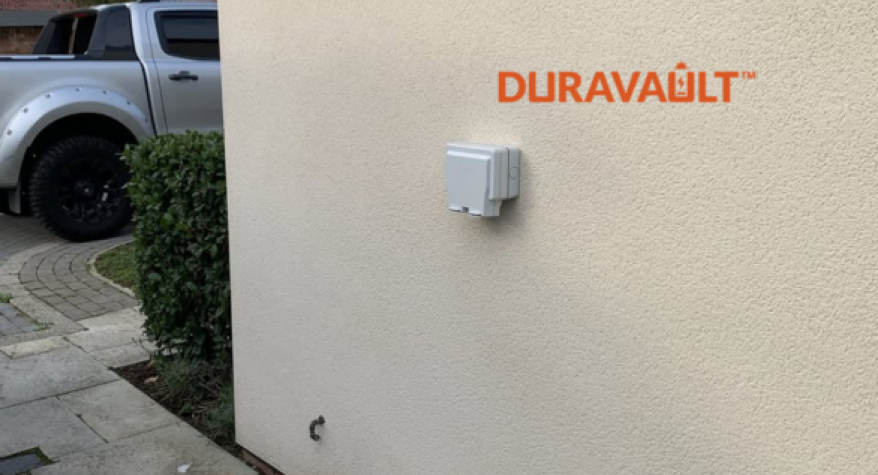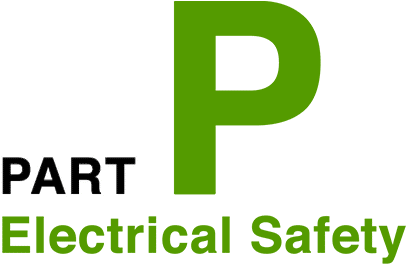Your Complete Guide to Installing Outdoor Power Outlets in Leeds by Duravault. Outdoor living, gardening tools, festive lighting, electric barbecues—many Leeds homeowners and landlords ask: “Can I have an outdoor socket?”
Can I Have an Outdoor Socket?
The answer is yes—but only if it's installed safely, professionally, and in line with UK regulations. In this guide, we explain where they can go, how they should be installed, what you need before you begin, and how Duravault, your trusted local electrician in Leeds, can make it stress free and compliant.
Where Can I Fit an Outdoor Socket?
Outdoor sockets can be incredibly useful—but choosing the right location is key to safety, convenience, and compliance. Popular locations include:
- Exterior walls near patios or decking, to power garden tools, lighting or kettles during summer BBQs.
- Garage or outbuilding walls, ideal for powering electric equipment, charging wheels, or holiday lighting.
- Fencing posts or pergolas, using weatherproof enclosures.
- Under eaves or covered areas, where rain exposure is limited but accessible for homeowners or tenants.
In Leeds’s neighbourhoods like Horsforth, Headingley, Seacroft, or Cross Gates, outdoor sockets improve functionality and rental appeal. But whatever the location, the socket must be rated for outdoor use (usually IP65 or higher) and installed with a dedicated, RCD protected circuit.
How Do I Fit an Outdoor Socket?
Installing an outdoor socket requires a safe, best practice approach:
- Survey and positioning: Confirm the optimal wall or location, factoring access, wiring route, aesthetics, and distance from the consumer unit.
- Route cable: Typically using 2.5 mm² twin & earth or armoured cable, run via conduit or surface trunking to maintain protection. Cable depth when burying must meet current regulations (typically 450 mm for direct burial).
- Install weatherproof enclosure: Use an IP65-rated box or socket module, fixing securely and sealing around edges to prevent moisture ingress.
- Connect to dedicated circuit: The socket must plug into a dedicated 20 A circuit or as part of a few protected sockets on an RCD-protected ring main or radial circuit.
- Fit RCD or RCBO protection: At the consumer unit, provide a 30 mA RCD or individual RCBO to ensure earth-fault protection.
- Test the socket: Perform earth leakage, insulation, polarity, and continuity tests. Document results on an Electrical Installation Certificate.
- Label and hand over: Label the circuit clearly in your consumer unit and provide user instructions.
Most installations can be completed in a single visit, typically a few hours. For landlords, it adds to your property’s usability and market appeal. For homeowners, you’ll get years of safe, convenient external power.
What Do I Need to Fit an Outdoor Socket?
Before installation, ensure you have:
- The right materials: IP-rated socket/module, weatherproof backbox, appropriate-rated cable, conduit or trunking.
- Selection of location: Consider proximity to consumer unit, user access, and external exposure to weather.
- Requisite permissions: Generally falls under electrical work that must comply with Part P of the Building Regulations, requiring installation by a qualified electrician or registration.
- Appropriate consumer unit capacity: If your current fuseboard is older, lacking spare ways, or lacking RCDs/RCBO(s), an upgrade may be needed before adding an outdoor circuit.
- Knowledge of local regulations: Leeds Council and building regulations expect safe installation with proper documentation and compliance with BS 7671 wiring standards.
Duravault provides a free pre installation survey to ensure your installation plan is risk assessed, safe, and future-proof. They’ll verify your fuseboard, check for compliance, and advise whether additional upgrades are needed.
Things to Check Before Fitting an Outdoor Socket
Knowing these basics can help you avoid common pitfalls:
- Is your consumer unit modern and compliant? A fuseboard over 10 years old or lacking RCDs may need replacement.
- Are there nearby damp or wet areas? The location should avoid regular rain exposure unless using IP65 or above fixtures.
- Is there potential for cable damage? Lawnmowers, kids, pets — routes must keep wiring out of harm’s way.
- Could frost, freeze, or heat cause grease or corrosion? Use fittings that withstand temperature extremes.
- Do you need landlord certification or compliance documentation? Landlords must provide tenants the Electrical Installation Certificate upon completion.
- Will you be adding more circuits later? Plan for spare ways in your consumer unit to avoid multiple upgrades.
Duravault’s surveys help homeowners and landlords spot these issues ahead of time—saving delays, costs, and compliance headaches.
Who Can Fit an Outdoor Socket?
Because outdoor installations involve exposure to weather and increased risk, only qualified, Part P registered electricians should install them. Why choose a professional?
- They understand IP ratings, cable routing, and protection requirements.
- They issue Electrical Installation Certificates or Minor Works Certificates, as standard.
- They ensure compliance with Part P, BS 7671, and Building Control notifications where needed.
- They use safe methods: trenching the cable correctly, using RCD-protected circuits, and providing proper labeling.
At Duravault:
- All electricians are NICEIC-certified and fully insured.
- We handle building-control notification and provide official certification.
- We work throughout the LS postcode areas and fulfil landlord reporting and compliance quickly and reliably.
Attempting this work unlicensed may invalidate insurance or pose dangerous health risks.
How Much Does an Outdoor Socket Cost?
| Installation Type | Typical Cost (ex. VAT) |
| Single IP65 outdoor socket, short run | £120–£200 |
| Medium-distance run or trench (10 m+) | £250–£450 |
| Socket plus consumer unit upgrade | £300–£600 |
| Multiple outlet circuits or complex routing | £300–£600+ |
The price can vary depending on the job complexity: Factors influencing cost:
- Cable run length
- Depth required for buried cable
- Wall type (brick, stone, rendered)
- Consumer unit age and capacity
- Additional safety features or labelling requests
Duravault provides fixed-price quotes after surveying the property—so there are no surprises. Quotes always include:
- Materials
- Labour
- Certification and testing
- Waste removal or asbestos-safe board disposal if applicable
How Duravault Can Help and the Areas We Cover
Duravault is your local choice for safe and compliant outdoor electrics in Leeds. Here’s what we do:
- Free on-site survey: Advice on location feasibility, cable routing, and compliance requirements.
- Professional installation: Trained electricians, tidy methods, and factory-fitted RCD protection.
- Certification: Full documentation under Part P regulations; Minor Works Certificate or Installation Certificate provided.
- Aftercare: Support if you need an additional socket, want to add lighting later, or adjust controls.
- Upgrades where needed: If your fuseboard is old or has no spare ways, we can quote safely for a replacement at the same time.
Final Thoughts
Yes, you can absolutely have an outdoor socket in your Leeds property—but only when it’s done correctly. With proper planning, safety measures, and installation by a qualified electrician, outdoor sockets offer convenience, value, and peace of mind. If you’re considering adding one, Duravault offers expert guidance, tidy installation, and compliance-certified documentation. We work throughout Leeds and surrounding postcodes, making installing outdoor electrics completely hassle-free.
📞 Get in touch at 0113 436 9988 or request a quote via www.duravault.co.uk
Your garden, summer kitchen or shed deserves dependable, durable electrics—installed safely with Duravault, Leeds’ trusted electrical specialists.



